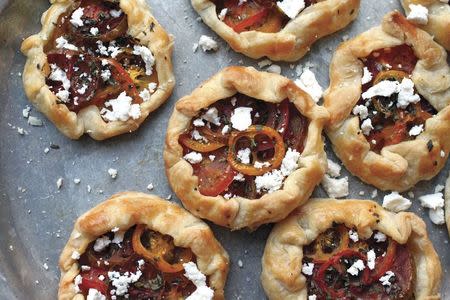World Chefs: Aliya LeeKong adopts global flavors for home kitchens
By Richard Leong NEW YORK (Reuters) - Aliya LeeKong hopes to inspire American home cooks with her interpretations of dishes from around the world in her debut cookbook "Exotic Table." A former investment banker of Indo-Pakistani and Tanzanian heritage, LeeKong was the culinary creative director at Junoon, the Michelin-star Indian restaurant in New York City until the start of this year. The book includes 100 recipes that span the globe from mandazis from East Africa, which are similar to doughnuts, to feijoada, a bean and meat stew that is considered Brazil's national dish, and Korean-style barbecue chicken. The 36-year-old, who was born in Syracuse, New York, spoke to Reuters about her passion for travel and her career change. Q: What inspired you to write this book? A: This book is an culmination of years and years of cooking, learning from different cultures and incorporating my culture. In the 80s, my mom would be putting chicken peas and tahini in a food processor to make hummus. Now it’s a ubiquitous thing. What constitutes American food is so different now. Q: What are some of the dishes you grew up eating at home? A: From my mom's side, we eat more typical Indo-Pakistani, so there was dal and lentil. There is this rice dish called pulao that has slow-cooked beef with rice and spices, which is more Pakistani than Indian. We did different types of curries. On my father side, the interesting thing about the food from Tanzania and Kenya, which is the Creole (food) of Africa, is that you are taking Indian spices and dishes that came over and you combine them with all the indigenous ingredients. Q: How do you adopt dishes you learn and make them your own? A: For example, when I was in Morocco I learned to make a beautiful lamb tagine with dried prunes and apricots that they steep in sugar water. I will not steep dried fruits in sugar water and feed it to my child. Instead I will use butternut squash and apples. That’s an example of taking what I learned and changing it. I’ll change it for techniques, for flavor, for health, for ingredients that are local to the U.S. and in season. Q: You left your investment banking job in 2008 to pursue a culinary career. Was it a gradual realization or an epiphany? A: It just took me a long time. I would dream all day about what I would make that night. Once I took an amateur cooking class, literally in that moment during the class, I realized that I could do this as a career. Q: Any advice for others wanting a career change? A: Evaluate the opportunity ... They should go and trail (chefs) in a kitchen and see if they like it day to day because it's a lot of work. Heirloom Tomato Galettes with Urfa Chiles, Mint and Ricotta Salata (Yields about 10-12 galettes) 1 lb heirloom cherry tomatoes, sliced thinly 1 sheet puff pastry, thawed according to package directions 2¼ teaspoons dried mint ¾ teaspoon Urfa chili flakes or other red chili flakes salt and freshly ground black pepper, to taste 1 egg, beaten with a splash of cream or water ¼ cup ricotta salata, finely crumbled 1. Preheat the oven to 375 Fahrenheit. 2. Place the cherry tomato slices on paper towels and blot so they’re as dry as possible. Place the puff pastry on a lightly floured work surface and roll out gently. Straighten it out and get an even thickness. Don’t roll it to be too thin. Using a 4½-inch round pastry cutter (or ramekin or jar mouth), cut 10 to 12 circles out of the puff pastry. 3. On each puff pastry round, overlap tomato slices in the center of each pastry, leaving a ½-inch rim. Sprinkle tomatoes generously with mint, chili flakes, salt, and freshly ground black pepper. Fold the edges of the pastry up over part of the tomatoes to form a ½-inch border, pleating as you go, and then brush the edges of the dough with egg wash. 4. Place galettes on a lightly greased baking sheet and bake for 25 to 30 minutes, until the crust turns golden brown and the tomatoes are cooked. Sprinkle with crumbled ricotta salata and serve warm or at room temperature. (Reporting by Richard Leong; Editing by Patricia Reaney and Lisa Shumaker)



